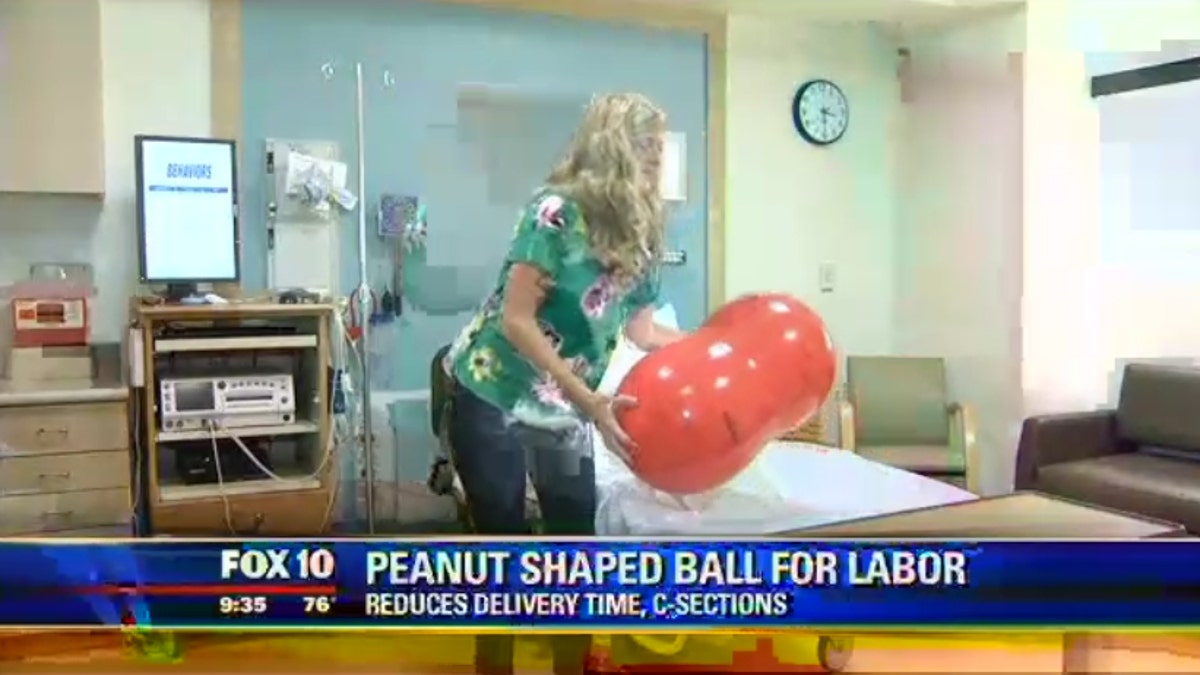
Most pregnant women know that a birth ball or an exercise ball can make labor more comfortable and can open up the pelvis to help it progress but a peanut-shaped exercise ball is a new tool that’s gaining popularity in hospitals and birthing centers across the country and it may even reduce the high C-section rates.
Mary Su, a 39-year-old mom from Modesto, California, used a peanut ball in April while in labor with her fourth child.
“I ended up using it a lot because it was something that I could do to make myself more comfortable and keep things productive while I was laying down,” she said.
Although Su was in labor for 36 hours, she said it was shorter than her previous VBAC delivery of her third child, which was 46 hours.
“It was comfortable. The only time my labor kind of stalled was when we weren’t using the peanut ball,” she recalled.
A new trend
“Three years ago I never met a nurse that knew what these were and today, everyone is running to steal them for their patients on the labor and delivery floor,” Allie Sakowicz, a certified birth doula in Chicago. said.
Traditionally, physical therapists use peanut balls to help patients with strength, balance and stability. That changed when a labor and delivery nurse at Banner University Medical Center Phoenix suggested that, since birth balls helped women without epidurals have faster labors, why not bring the ball into bed for all women in labor?
Emily Botsios, the nurse, brought her idea to Christina Tussey, a clinical-nurse specialist. Since this method had never been done, the two decided to conduct their own study.
“It basically opens up the diameter of the pelvis to give the baby more room to descend and progress in labor,” Tussey said.
Their findings, published in the Journal of Obstetric, Gynecologic & Neonatal Nursing in 2011, showed the peanut ball shortened the first stage of labor by 90 minutes and the second stage by 22 minutes.
The study also found a reduction in the use of forceps and vacuum-assisted deliveries.
“It’s some pretty significant findings for something you can pick up for $20 at a sporting goods store,” Sakowicz said.
The peanut ball can also help women on bed rest or those whose babies are in a posterior position, with the head facing the mother’s abdomen, which is also more likely with an epidural.
“This gives a baby enough room to turn if they need to so that they can come out into the pelvis quicker,” Tussey said.
Using the peanut ball during labor also has the potential to significantly reduce the C-section rate in the U.S., which remains high at 32.2 percent.
In 2015, the Banner team conducted another study and found that 21 percent of study subjects who did not use the peanut ball went on to require a C-section, while only 10 percent of subjects who used the peanut ball needed a C-section.
“You really want to prevent the first C-section because almost 90 percent of women who get their first C-section have a repeat C-section,” Tussey said.
More and more hospitals are catching onto the idea and now offer peanut balls, but if you want to use one for labor, make sure it’s the right one for your height and weight— too small and it won’t be as effective, too large and it could cause hip pain.
Although peanut balls are safe, it’s a good idea for women to check with their providers especially if they have had hip surgery or another problem, Tussey said.
“We would love all our patients to have vaginal births as much as possible and I think if there is an opportunity to have something that will enable that woman to have the best results with a vaginal birth with a simple intervention, why not use it,” Tussey said.
